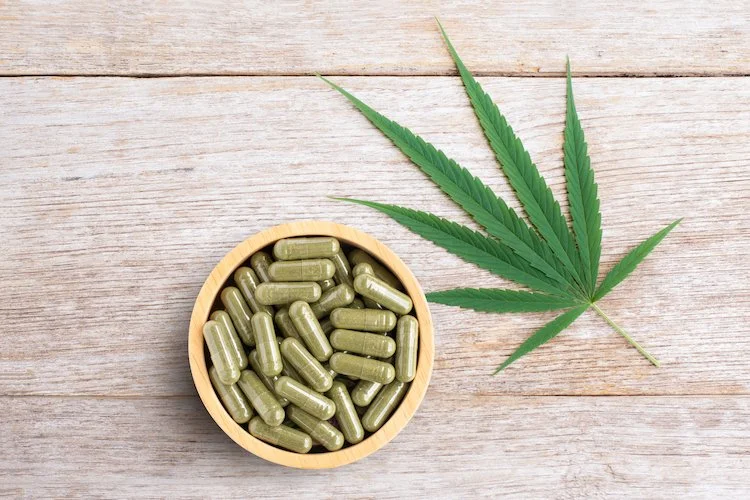Cooking with Cannabis: CBD-Infused Summer Pudding and Syllabub
As a child I felt lucky to be born in June when strawberries and raspberries came into season. Instead of a birthday cake I would ask for a Summer Pudding, a traditional English dessert dish, which necessitated a trip to the local fruit farm to pick the berries and sample plenty of them for sweetness! Syllabub is another traditional English sweet, and one not served to children as it contains alcohol. Both these delicacies work well with CBD alcohol tincture which adds an ambient note of wellbeing to an extravagant treat. I love these two desserts served together but both are excellent and satisfying stand alone desserts.
Summer Pudding Ingredients
300g/10.5 oz strawberries
250g/ 8.5 oz blackberries
500g/ 1lb 1oz raspberries
100g/ 3.5 oz red currants, blackcurrants or blueberries
Or 1.25/2lbs 4oz mixed berries of your choice.
60 drops Synergy CBD-rich alcohol tincture
175g/6oz caster sugar
3 tablespoons water
7 slices of day-old white bread ( store bought sliced works best)
Equipment
A pudding basin or high sided mixing bowl - 1.25 litre/ 42 floz capacity.
Clingfilm, a side plate and something to use as a weight; a can or two of beans!
Instructions
1) Wash the berries and gently dry with kitchen towels, keep the strawberries separate & remove the leaf tops. Set aside.
2) In a small saucepan add the caster sugar and the 3 tablespoons of water, heat gently, stirring a little until the sugar is completely dissolved.
3) Turn up the heat and bring the sugar water to a boil for 1 minute.
4) Add the fruit (except the strawberries) and cook for 3 minutes over a low heat, stirring occasionally. The berries will soften but won’t completely lose shape.
5) Drain the fruit in a sieve and catch the dark red berry juice in a bowl. Take 2 cups of the berry juice and set aside, add 60 drops of Synergy CBD-rich alcohol tincture into the juice and stir. Pour into a shallow bowl and set aside.
6) Take two lengths of clingfilm and lay them overlapping at the bottom of the bowl, let the clingfilm hang over the brim to make a generous fold over the top of the basin when the pudding has been made. This makes the final turning out of the pudding much less nerve-wracking!
7) Take the 7 slices of bread and cut all the crusts off. Then cut 4 slices in half, making eight rectangles, take 2 slices and cut out four triangles out of each slice. Leave one slice whole.
8) Now to assemble the pudding: start with the 1 whole slice, dip it into the CBD berry juice so lightly coat and lay the slice to cover the bottom of the bowl. Build up the sides of the bowl by dipping the rectangular half-slices in the juice one at a time and press them into the bowl, make sure every edge fits neatly together and don’t be afraid to cut down the size of the bread pieces to make everything fit nicely. The triangles are for creating a lid for the filled pudding but you may have to use a couple to finish the sides, don’t worry, there will be enough or simply add more pieces as you need.
9) Once the basin is lined with the juice-coated bread, start to spoon in the berries, adding a few strawberries with every spoonful. When the pudding is filled, make a mosaic lid with the bread triangles and then pour over the remaining CBD berry juice. Fold the ends of the clingfilm over the pudding and loosely seal. Then place a side plate on top and add something like a can or two of beans to weigh the plate down. Refrigerate for 8 hours or overnight.
10) To serve the pudding, take off the side plate and open out the cling film, then take a large plate and put it upside-down on top of the pudding basin. Flip the plate over, holding the pudding basin steady on top, then remove the basin and the cling film, serve with syllabub, cream or ice-cream!
Enjoy!
CBD Syllabub
Syllabub is a quick and easy dessert to make, Synergy CBD alcohol tincture pairs well with the white wine and adds a relaxing dimension to this exquisitely delicate traditional English recipe.
Ingredients
290 ml/ ¼ pint double cream or heavy whipping cream
55 gr/ 2 oz caster sugar
½ lemon in finely zested
3 tablespoons fresh lemon juice
40 drops Synergy CBD-rich alcohol tincture
150 ml/ 5 fl oz white wine
Mint leaves, or berries to garnish
Equipment
A whisk, a zester or grater, 6 ramekins or other small dessert dishes or glasses.
Instructions
1) Warm the sugar, lemon juice and lemon zest until the sugar is dissolved, remove from heat and set aside.
2) Add the 40 drops of Synergy CBD-rich alcohol tincture to the wine and add this mixture to the sugar lemon mixture, stir together lightly.
3) In a separate bowl whisk the cream to soft peaks and then fold in the wine/sugar/lemon mixture. Mix well and then pour into the ramekins or other little dishes. Refrigerate for 2 hours and then garnish with a mint leaf or berries.





